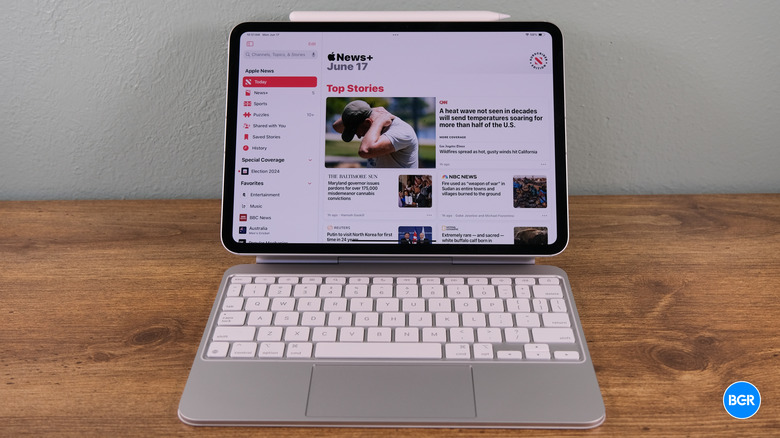Foldable iPad: Almost No Crease, macOS App Support, 2028 Launch
Apple is widely expected to launch foldable devices in the coming years, though the company will do it at its own pace. That's what we've come to know as the "Apple way:" Apple only releases products or product features when it thinks it can deliver its own version, which it often presents as better than what's already available from the competition.
Apple is often accurate. It's usually setting the tone in the industry, with everyone following its lead. Take foldables, for example; a report a few days ago said that the foldable iPhone is the device the market needs to see renewed growth. What the likes of Samsung and Huawei are doing isn't enough to drive sales.
A pair of new reports claim that the foldable iPhone is indeed in the making and that Apple is also working on a foldable iPad/Mac contraption. The latter appeared in a purported roadmap a few days ago that teased a 2028 release window for the foldable iPad/Mac.
Bloomberg's Mark Gurman shared more details about the large foldable device, detailing the screen design and explaining what operating system might power the large tablet.
Apple aims to ship the foldable iPad around 2028, the reporter said in the latest Power On newsletter.
Gurman learned that Apple designers are working on "something akin to a giant iPad that unfolds into the size of two iPad Pros side-by-side." Apple has been working for years on the device, with one of the design goals being to eliminate the crease that current foldable products show when unfolded.
No foldable Android phone vendor managed to eliminate the crease, though Samsung's Galaxy Z Fold SE might be the closest thing to a creaseless foldable phone. The Galaxy Z Fold 7 is said to inherit that design. As for Apple, older reports claimed that the crease is a big reason why Apple might be unhappy with the current foldable screen tech.
Gurman says that Apple has made progress on the front. A prototype of the foldable Apple has a nearly invisible crease. It's too early to tell whether Apple can completely eliminate it.
The resulting device would have a display that approaches 20 inches. Gurman mentions the 18.8-inch screen size that appeared in previous leaks, including last week's OLED panel adoption roadmap, where the 18.8-inch foldable iPad was also listed.
Gurman also addressed the operating system that Apple will choose for the device, saying it's not clear where Apple is going. He speculates that Apple will still use a version of iPadOS for the device, but the foldable iPad will not be "a true iPad-Mac hybrid." That said, iPadOS might become advanced enough by then to run macOS apps.
I've been hoping for years that Apple's first foldable iPad/Mac would also merge iPadOS and macOS or that Apple would support a dual-boot mode that would let me make the most of each operating system. Gurman's piece suggests that might not happen, as Apple still wants customers to buy as many of its products as possible.
Gurman also notes that a foldable iPhone would launch in 2026 at the earliest, a few years before the foldable iPad. That's in line with the foldable screen report I mentioned before, in which the DSCC experts said Apple will enter the foldable phone market in 2026.
Separately, The Wall Street Journal penned a report saying that Apple will release a foldable iPhone as soon as 2026 to fuel growth.
The same report also mentions a larger foldable device "intended to serve as a laptop." The device would feature a screen that measures about 19 inches. The WSJ doesn't offer a release window for the foldable iPad but says both devices were in development for years. Apple has been struggling with key challenges, including the hinge and the display cover.
